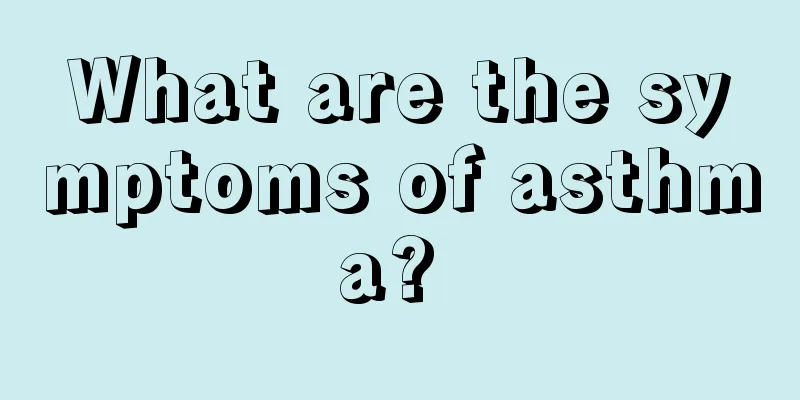What is diphtheria and what harm does it cause?

|
Diphtheria is a common, acute respiratory infectious disease and is highly prevalent among infants and young children. The onset of diphtheria can cause great harm to infants and young children. Many children with diphtheria will have difficulty breathing, and severe cases may even be unable to sleep. It can be said that this respiratory disease caused by exotoxins is also very harmful to children. For parents, if their children have diphtheria, they must receive timely treatment to prevent the disease from affecting their normal growth and development. Diphtheria is an acute respiratory infectious disease caused by Corynebacterium diphtheriae (also known as K1ebs-tloeffler bacteria, abbreviated as KLB), which mainly causes disease through exotoxin. The disease is mostly prevalent in autumn and winter, and is most common in children aged 1-5 years. Infants under 6 months old rarely get the disease because they have innate immunity. According to the location of the lesion, it can be divided into pharyngeal diphtheria, laryngeal diphtheria, nasal diphtheria, mixed diphtheria and ectopic diphtheria. 1. Pharyngeal diphtheria usually has a slow onset, with mild or moderate fever, and the symptoms of poisoning gradually worsen. The local inflammation is not serious, but there is a typical pseudomembrane on the tonsils, which is grayish white, thin at first and then thickens, with neat edges. The base is firmly adhered to the mucosa and is not easy to peel off. Scraping it hard can easily cause bleeding. According to the size of the pseudomembrane and the severity of the systemic poisoning symptoms, it can be divided into localized type (pseudomembrane does not extend beyond the tonsils), disseminated type (pseudomembrane extends beyond the tonsils) and toxic type (pseudomembrane is extensive, systemic poisoning symptoms are severe, often accompanied by enlarged submandibular lymph nodes and edema of the tissue around the lymph nodes, called "bull neck"). 2. Most cases of laryngeal diphtheria are caused by the spread of pharyngeal diphtheria. They may also originate in the larynx without pseudomembranes in the pharynx. The child presents with hoarseness, barking cough, followed by dyspnea, wheezing during inspiration, and simultaneous depression of the intercostal soft tissue, supraclavicular fossa, and upper abdomen (three-depression sign). Based on clinical manifestations, obstructive dyspnea can be divided into 4 degrees. First degree: When the patient is quiet, there is no dyspnea, but when he moves or cries, there is nasal flaring and three-point concave sign. Second degree: The patient has breathing difficulties such as wheezing and three-point concave sign during inspiration, but can still fall asleep when quiet. Third degree: has second degree breathing difficulties, and is irritable and unable to sleep. Fourth degree: Symptoms of third degree dyspnea, with cyanosis or coma. 3. The systemic symptoms of nasal diphtheria are mild, with only nasal congestion, more bloody serous secretions from one or both anterior nares, the nasal mucosa may be covered with pseudomembranes, and there may be superficial skin erosions under the anterior nares. 4. Mixed diphtheria: A mixed type of diphtheria is one that has more than one of the above types of diphtheria, such as pharyngeal diphtheria, nasopharyngeal diphtheria, etc. 5. Ectopic diphtheria Corynebacterium diphtheriae can invade the eyes, ears, vulva of girls, umbilical cord of newborns and skin wounds, etc., producing pseudomembranes, which are often accompanied by secondary infections. 6. Diphtheria carriers have no systemic or local signs and are generally in good condition. Diphtheria culture and virulence tests are both positive, and the Sick test is negative (the patient is immune to diphtheria toxin). 7. Patients with disseminated and toxic diphtheria , as well as those who are not diagnosed and treated in time, may develop myocarditis starting from the second week of the disease. Clinically, they may have mental depression, pale complexion, loss of appetite, nausea, vomiting, edema of the limbs, oliguria, increased heart rate, decreased first heart sound, extrasystoles, decreased blood pressure, or progressive enlargement of the liver. Electrocardiogram examination often shows low voltage, ST segment and T wave changes, bundle branch and (or) atrioventricular block, and heart rhythm disorders. Sudden death may occur as a result. Other complications include nerve paralysis, mostly paralysis of the pharyngeal and palatal muscles, nasal speech, and swallowing difficulties. Occasionally, bronchopneumonia and kidney damage occur. 8. Differentiation between pharyngeal diphtheria and acute suppurative tonsillitis: the latter has an acute onset, with high fever, red and swollen tonsils, obvious pain, and yellow-white exudate in the form of dots or flakes (loose texture, easy to peel off) on the surface. It should also be differentiated from ulcerative membranous pharyngitis, thrush, and pseudomembranous pharyngitis that occurs in patients with granulocytopenia. Differentiation between laryngeal diphtheria and acute laryngitis: the latter has an acute onset, often with sudden onset of dyspnea at night, and no pseudomembrane is visible during laryngoscopy. Occasionally, it needs to be differentiated from tracheal foreign bodies. 9. Laboratory examination Take secretions from the throat, nose, etc. for smear examination. If polar bacilli are found, it can be used as a reference for diagnosis. If bacterial culture finds diphtheria bacteria, the diagnosis can be confirmed. If it is inconsistent with the clinical findings (i.e. the culture is positive, but there is still clinical doubt about the diagnosis of diphtheria), a bacterial virulence test can be performed to assist in the diagnosis. The total white blood cell count is between (10-20) x 109/L (10000-20000/mm3), mainly neutrophils. 1. Epidemiological data: age, season, diphtheria, vaccination history, and contact history with diphtheria patients. 2. Clinical manifestations include a smooth grayish-white pseudomembrane in the throat that is difficult to wipe off, accompanied by systemic poisoning symptoms. Pharyngeal diphtheria should be considered. Hoarseness, barking cough, or progressive laryngeal obstruction symptoms, with pseudomembrane visible through laryngoscopy, suggest laryngeal diphtheria. If an infant has persistent nasal congestion, serous and bloody secretions, erosions and epidermal exfoliation around the nostrils, be alert to nasal diphtheria. In short, patients with typical clinical manifestations can be diagnosed if diphtheria bacteria are detected in bacterial culture. If the manifestations are atypical and the bacteriological examination is positive, a comprehensive Klebsiella test and bacterial virulence test should be performed. If both are positive, it can be diagnosed as diphtheria. If only the virulence test is positive, the person may be a carrier. Diphtheria is very harmful, so if you find that your child has a respiratory disease in daily life, you must treat it in time. At the same time, you should also reduce your child’s exposure to viruses that may cause diphtheria in daily life. |
<<: Is it okay to take a walk right after dinner?
>>: What is hyperlipidemia? What are the causes of high blood lipids?
Recommend
How to prevent clothes from pilling
Some clothes will pill after just one wear and wa...
Standard size of fetus at 24 weeks
For many pregnant women, they want to have a comp...
What to do if white worms grow in hair
Nowadays, everyone pays more attention to their h...
What's the matter with the swelling and pain in the right solar plexus
The temples are located on both sides of our eyes...
Is Chinese medicine useful for premature ejaculation
If a man always suffers from premature ejaculatio...
Does the fetal heart rate get slower as the month gets older?
At different stages of pregnancy, the vital signs...
What are the taboos of transplanting frozen embryos?
Modern people's reproductive function has dec...
What is the method to detect early liver cancer
There are many ways to check for liver cancer, in...
Can intervention be used to treat multiple liver cancers?
Multiple liver cancers can be treated with interv...
Why does my sternum hurt when I move it?
If you are not careful at work, your body will be...
How to apply eye shadow more naturally
In daily life, we are all familiar with makeup, b...
How much does it cost to check for bile duct cancer
Cancer has taken away countless lives and broken ...
Girls put toothpaste on the soles of their feet
There are many problems in the human body. People...
How to use diapers for babies in summer
Diapers are essential items for caring for babies...
Milk plus salt has such a magical effect
Milk is a beverage we drink every day. It has the...









